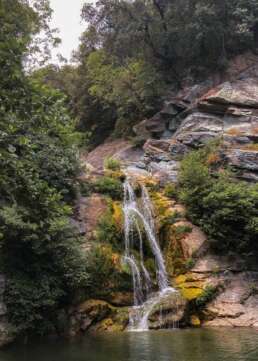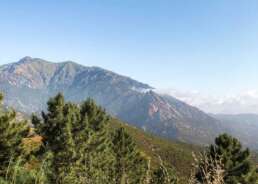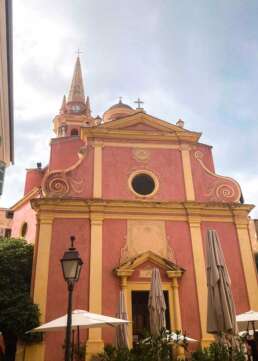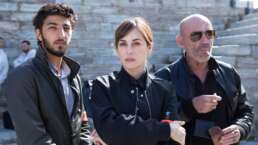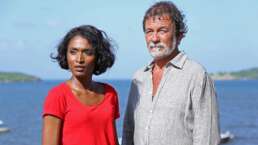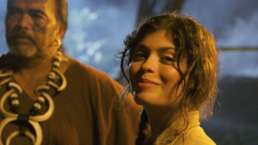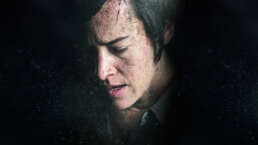
Some of the best places to visit in France lie outside of l’Hexagone (metropolitan France).
In this article, we’ll explore Corisca, Martinique, and Réunion, though there are actually 13 French-administered territories outside Europe. This includes five French overseas departments (all of which are part of the European Union) and five French overseas territorial communities (of which Saint Pierre et Miquelon and French Polynesia are included within).
New Caledonia holds the special distinction of a Sui generis collectivity, which means that citizens have a New Caledonian citizenship, as well as a French one.
Corsica
Corsica is often grouped together with mainland France (and referred to in texts as Mainland France plus Corsica), due to its location 105 miles directly to the south of Metropolitan France, though it is technically a territorial collectivity of France, meaning that it has had some political autonomy since 2018.
There are regular commercial flights between Corsica and the mainland throughout the year, though these increase considerably during the summer when Corse, as it is known in French, becomes a popular vacation spot among the French. Alternatively, there are ferry crossings, which can be done as a foot passenger, or by bringing a car, and which take around six hours.
Corsica only became a part of France in the 18th-century when it was sold to the French by the Republic of Genoa as part of an effort to repay their debts to the French following their defeat during the Seven Years’ War. This move was never seen as legitimate by the Corsican Republic. Napoleon was born in Corsica, shortly after its annexation by France.
A land of beautiful aquamarine sea, endless beaches, and lush greenery: Corsica is a dreamy destination in southern France that often misses much of the press it deserves in lieu of other destinations which are on the mainland such as Marseille or the French Riviera. The north of Corsica is particularly wild, and if you want to see it for yourself, you can watch the Time is a Killer series on MHz Choice.
Today, Corsica is best-known for its sandy beaches, although it is starting to become sought after for its wines too. There are both red and white varieties, though a particularly unique red that is only produced in Corsica is Sciacarello.
One of the top highlights of Ajaccio, Corsica’s capital city, is visiting the sumptuous cathedral of Our-Lady-of-the-Assumption (the Virgin Mary is the Patron Saint of the city). This Baroque meets Mannerist 16th-century masterpiece is where Napoleon Bonaparte was baptized in the latter half of the 18th-century.
Capo di Feno is another must-see close to Ajaccio, which boasts magnificent views of the azure blue Mediterranean Sea and is the site of a crumbling Genovese watch tower. Close to the point is the Capo di Feno beach, which is long, sandy, and is popular among surfers.
The second largest city in Corsica is Bastia, which is located in the north of the island and is featured in the Murder In…:Bastia episode of the French mystery series Murder In…. The Corsican town is best-known for its picturesque harbor, which boasts several restaurants focusing on sea-forward menus and a smattering of pastel hued houses.
After a stroll around a port, which provides a great introduction to the city, another great point of interest in Bastia is the historic old town, known locally as Terra Vecchia. The maze of cobbled lanes provide welcome relief from the hot sun during the summer months and boast treasures such as the Oratoire Saint-Roch de Bastia whose simple façade hides a beautiful Baroque interior and the church of L’église St-Jean-Baptiste, which is the largest in Corsica.
Martinique
Martinique is a single territorial collectivity of the French Republic located in the eastern Caribbean Sea and is part of the French Antilles. The capital of the volcanic island is Fort-de-France, and while French is the only official language of Martinique, almost all of the close to 400,000 residents of the island speak both French and Martinican Creole.
The distance between Paris and Fort-de-France is close to 7000 km and the journey takes around 9 hours on a non-stop flight, making it one of the longest domestic flights in the world. One of the more unique architectural sites in Martinique is the Sacré Cœur de Balata, which was built using the Sacré Coeur Basilica in Paris as its inspiration and is so strikingly similar that it is now nicknamed the Montmartre martiniquais (Montmartre of Martinique).
The ecclesiastical building was commissioned by the then island’s bishop after he had admired the original in Paris. Constructed between 1923 and 1925, the church is not only dedicated to the Sacred Heart of Jesus, but also to all those who lost their lives in WWI.
The resulting structure has exactly the same floor plan as the Sacré Coeur in Montmartre, Paris, albeit it is five times smaller than the original. The church is also situated close to the garden of Balata, a veritable paradise with its verdant scenery, amazing viewpoints (particularly from the rope bridge, access of which is included in the entrance ticket), and lush vegetation.
As well as its metropolitan areas, the island boasts a unique blend of dense jungle (particularly in the north), crystal clear waters, and volcanic peaks. Much of this lush scenery can be seen throughout the crime series Deadly Tropics. Many claim that the most beautiful beaches in the Caribbean lie within Martinique.
Some of the most popular sandy stretches on the island include the volcanic black sand beach Anse Noire, Anse Mitan, which is easy to reach thanks to regular shuttle boats to Fort-de-France, and Anse Dufour, a yellow sand beach close to Anse Noire.
Thanks to its lush green landscape and volcanic terrain, Martinique is not only a beach destination, but one that is popular among hikers too. One of the tougher hikes on the island is hiking Montagne Pelée.
This is actually an active volcano (with no danger of erupting any time soon) that infamously erupted in 1902, tragically killing almost all 30,000 inhabitants of Saint Pierre, the former capital of the island, and demolishing the town in less than five minutes.
Réunion Island
Réunion, known as La Réunion in French, is located in the western Indian Ocean, around 950 km east of Madagascar and 175 km southwest of Mauritius. A three-million year old volcanic island, it’s around 10,000 km away from the French mainland. Despite its distance, Réunion is a department of France, meaning that it holds exactly the same political status as all of the regions in Mainland France such as Île de France and Brittany.
It’s nicknamed the intense island due to its many extreme contrasts (Réunion is simultaneously oceanic, volcanic, and tropical), but also because it is home to one of the most active volcanoes on earth, Piton de La Fournaise (the Furnace). Since 2010, around 42% of the island’s total surface area has been listed as a UNESCO World heritage site thanks to its biodiversity.
While much of the island was created by the eruptions of Piton des Neiges volcano, which is now dormant and created the highest peak of Réunion (around 3000 meters above sea level), the third southeastern portion of the island was created by Piton de La Fournaise.
As you might imagine after such seismic activity, the many peaks and troughs (including sheer cliff faces) of the French department means that it is now popular among experienced hikers, who wish to see the unique vegetation of the island, contrasted by the volcanic lava flows and layers of rock which have been formed over millions of years.
Some of the more popular hikes on the island include Dos d’Ane to Cap Noir (with Cap Noir being one of the more memorable viewpoints of the island), walking to the base of Le Piton de la Fournaise, and La Fenetre des Makes. If you want to enjoy the scenery of Réunion from the comfort of your couch, it’s the setting for Murder In…: Réunion Island.
A final note
Simply summed up, the region is all about outdoor pursuits, wine, and city breaks. Those wishing to get away from the bright lights of Paris will find a cozy refuge among the many hills of Lyon, or alternatively in one of the smaller cities close by such as Annecy or even Vienne.
Foodie enthusiasts should not miss out on the wines and cheeses of the region, while winter sports enthusiasts will find everything their heart desires come the coldest months of the year. For an even greater glimpse of Auvergne-Rhône-Alpes, check out all of the Murder In… episodes set in the region.
Episodes featuring France’s Territorial Collectives on MHz Choice
About the Author
Sophie Nadeau is a British Canadian travel writer currently residing in Paris with her French husband. She has been lucky enough to have lived in several different countries and has run her travel blog, solosophie.com, full time since 2017. With a particular interest in history and culture (especially if there’s a château visit involved), she spends her spare time painting, reading, cooking up vegetarian recipes, spending too much looking up dog photos online, and researching new hidden gems to discover.

